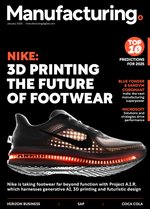Arm: how IoT helps retailers adapt to increased demand

There are a number of challenges for companies responsible for merchandising and transportation to overcome. The way shipping and logistics firms operate has evolved and smart tracking solutions - whether its smart logistics devices or tracking add-ons implemented by manufacturers - are now playing an influential role in the digitalisation of logistics.
As a result of eSIM, manufacturers can take advantage of IoT connectivity that is seamless, as it is embedded at the point of manufacture and can be deployed automatically out-of-the-box in any geographical region. eSIM technology provides a comprehensive range of benefits to manufacturers of connected devices for logistics and transportation.
The eSIM technology will help to solve some of these challenges. As a result of eSIM, manufacturers can take advantage of IoT connectivity that is seamless, as it is embedded at the point of manufacture and can be deployed automatically out-of-the-box in any geographical region. eSIM technology provides a comprehensive range of benefits to manufacturers of connected devices for logistics and transportation. With the industry facing unprecedented challenges as a result of COVID-19, it is time for manufacturers to double down and lead the sector to ever greater visibility and automation. The SIM is embedded into the chip rather than a card that is inserted, it is smaller so can make beacons more compact, and is able to cross borders using Remote SIM Provisioning and connect automatically to the local network to lower tariffs.
How does IoT help retailers adapt to increased demand?
Previously, customers would go to a store, purchase products and bring them home themselves. However, although that still happens occasionally, there is an increased demand for home delivery and many retailers are having to transform their fulfilment strategy to meet that trend.
Industry players are already investing millions of dollars to replace barcodes with IoT sensors, including smart chips generated by 3D printers. With more than 40 million parcels and shipments moving every day worldwide, the potential volume for IoT-based replacement is over 14 billion per year. SJ Consulting anticipates the replacement to be underway by 2021. Technology like beacons may reduce the number of manual scans each package has to go through. When shopped, the typical package is scanned 25 times, costing the carrier approximately $0.25-0.50 per package. By reducing the number of times a package is scanned, carriers can lower their shopping costs and expedite shipments, while at the same time providing real-time visibility into the shipment for the shipper and customer. The sensors and tracking solutions created by logistics manufacturers can enhance this digitalisation which will allow for greater resilience in the supply chain and increase the numbers of shipments that can be processed. The flexibility of ease of an eSIM connected solution can shorten manufacturing time and time to deployment.
Interested in reading more? Check out Arm’s full whitepaper here!

